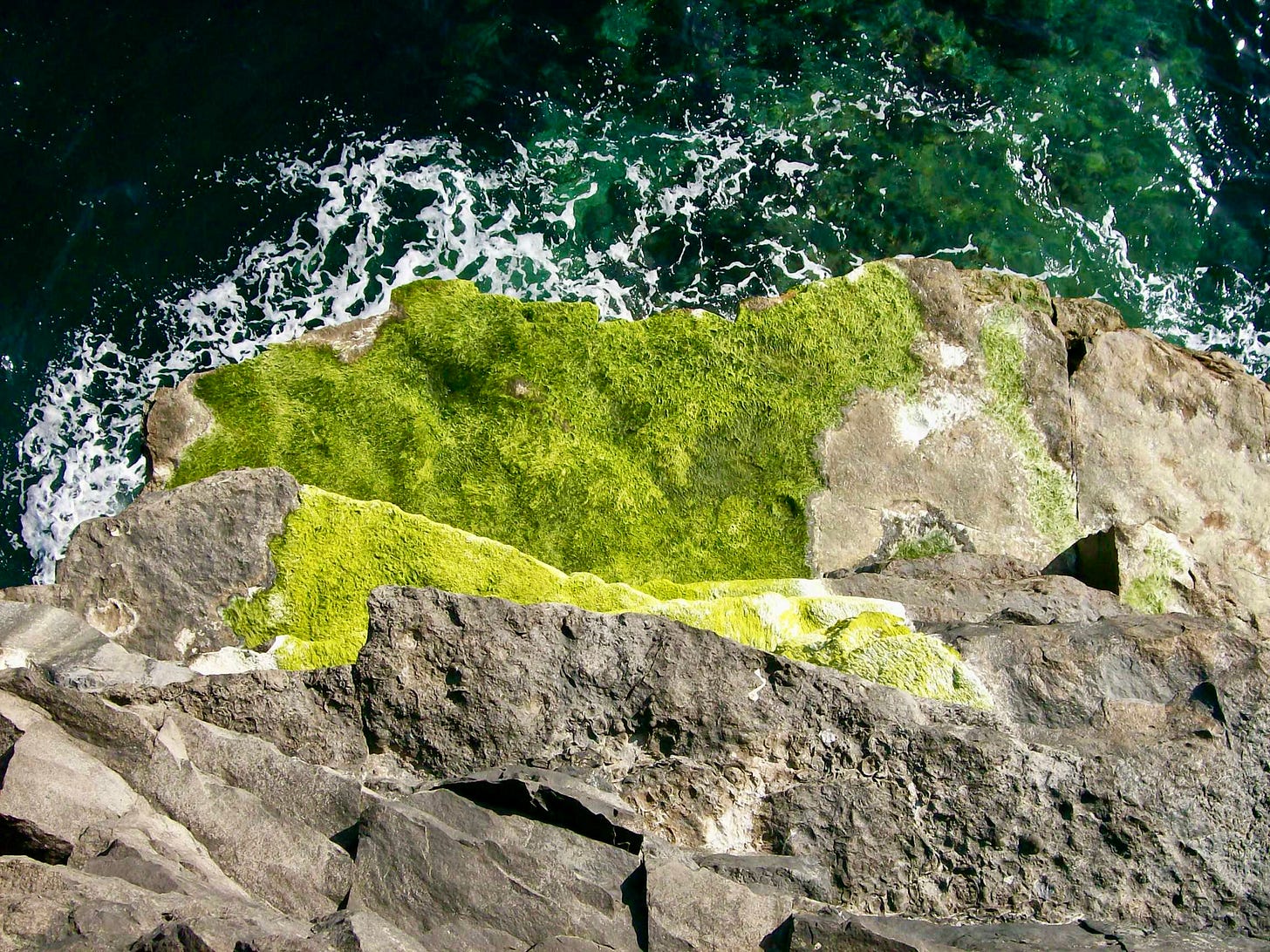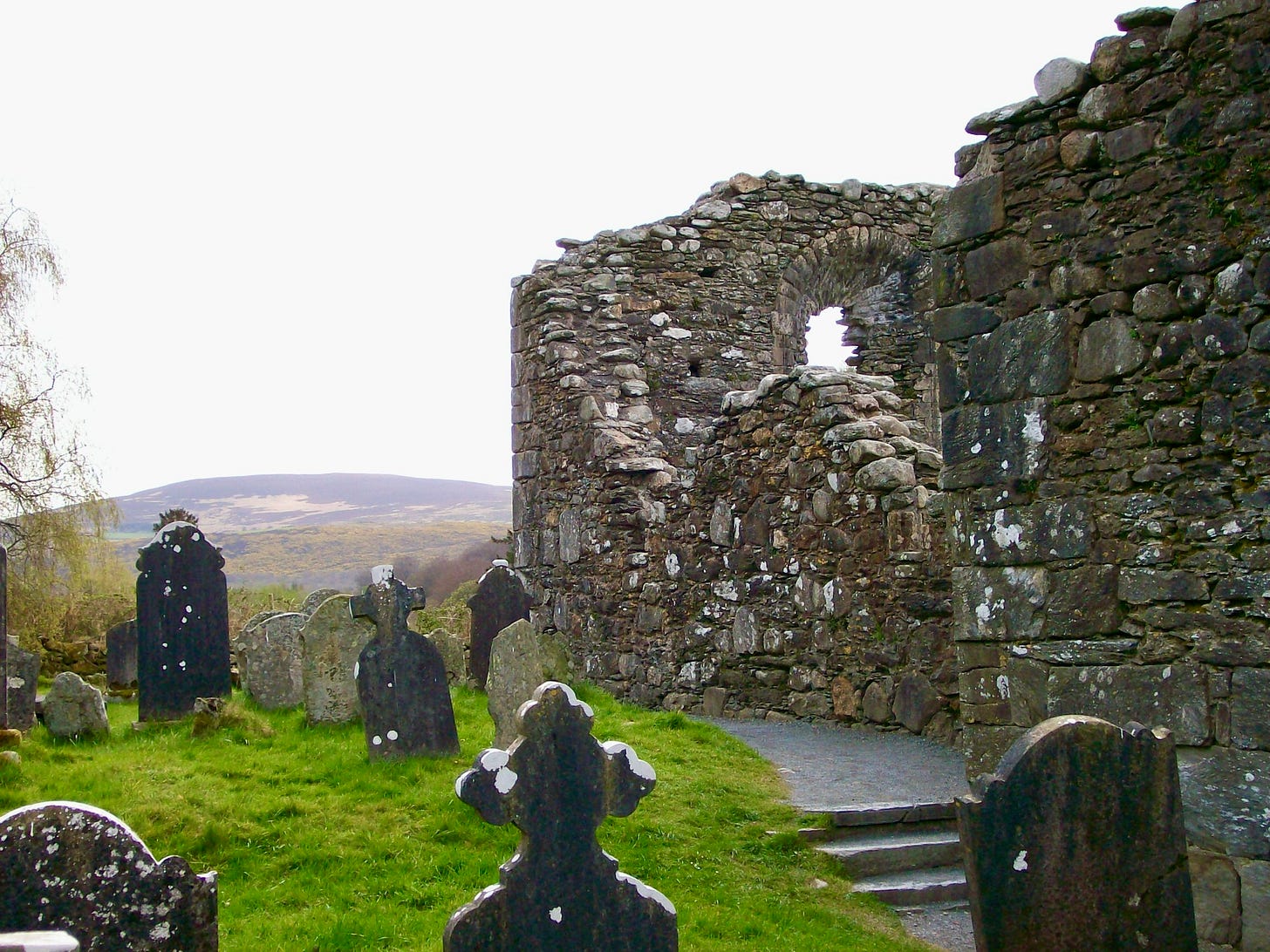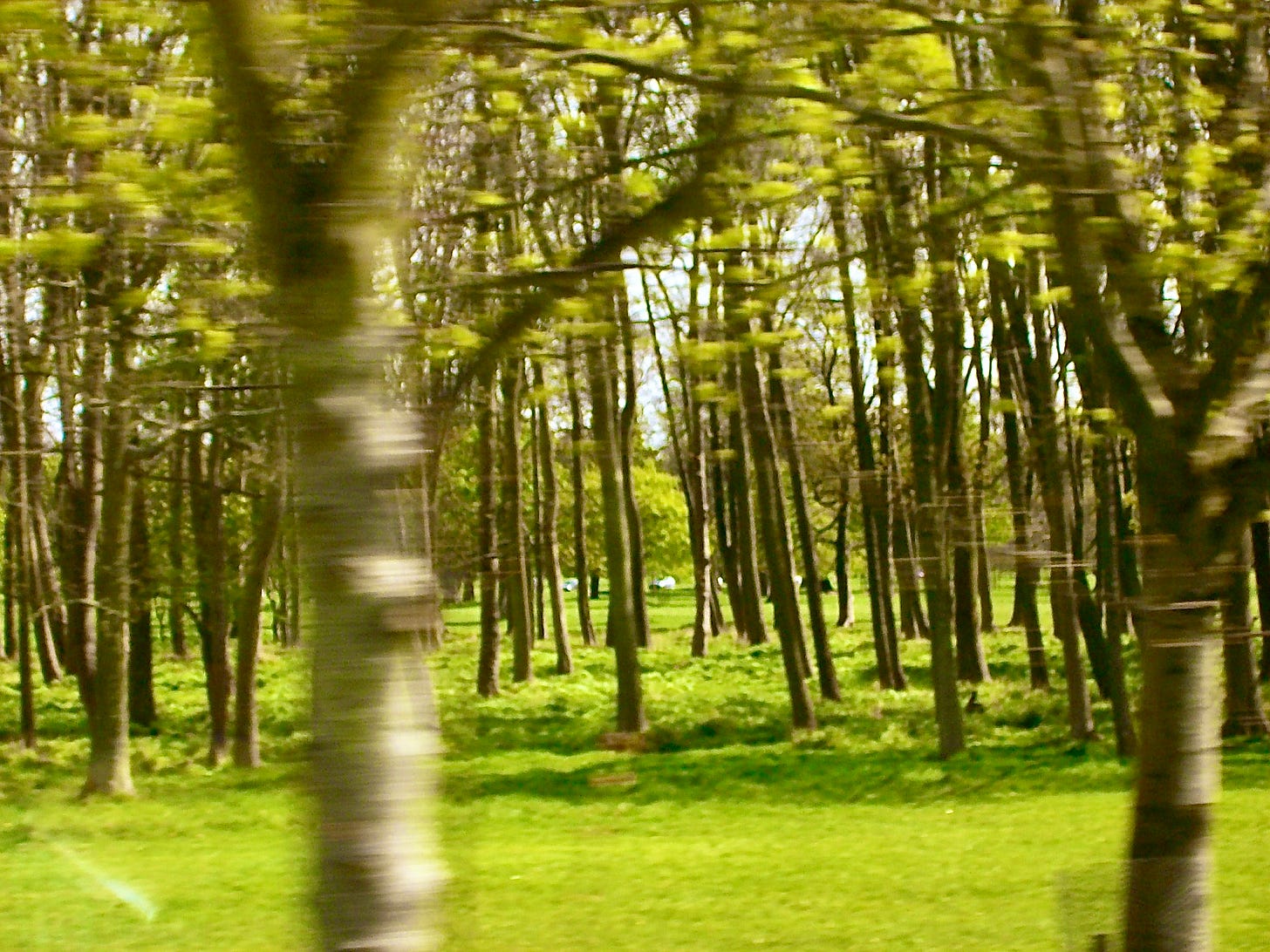What Ireland can teach us about sharing space
How beloved places divide themselves, and put themselves back together
I’d like to preface this post by acknowledging that I’m about the furthest thing from an expert on Irish culture and history. A cardinal risk of writing and musing about Irish culture undertaken by Americans — even those who, like me, have their fair share of Irish ancestry and heritage — is a kind of flattening of Irish symbols, holidays, and practices into things designed only to serve our own purposes.
It’s this flattening that’s on full display every year in America on St. Patrick’s Day. However well-intentioned, Americans’ perceptions of Ireland tend to be grounded in some of these superficial totems of Irish culture: the shamrocks and the leprechauns; the Guinness and the Jameson; the musings about how thirst-inducing Irish actors like Paul Mescal and Andrew Scott are.
There’s some risk even in the slightly deeper set of symbols that show up about Emerald Isle these days — the visual of the rolling green hills; the banal, decontextualized quotation imparting (possibly) Celtic wisdom; the stray Yeats stanza — which is the plucking out from Irish culture the “nice” and “peaceful” things we all agree are excellent, while overlooking some of the more complicated parts of the nation’s history that actually make it the fullest, richest version of itself. To truly understand any place, and to draw from that place the lessons we need to thrive in troubled times, requires considering all of it: the good, the bad, and the ugly. Beautiful and terrible things happen in every place, and in every nation (I’m an American, for heaven’s sake).
And so, I’ll argue that St. Patrick’s Day is in fact a fine time to reflect on what Irish culture and history can teach us Americans. Paddy’s Day is not, after all, one of those holidays that Americans made up to appropriate other cultures; it is, by all accounts, a massive occasion in Ireland, and contains within it equal shares of celebration and lament, the flowers and thorns both of a complicated history. The Anglo-Irish poet and philosopher
, in a poem about a journey back to his half-homeland, conveys this weighty Irish dichotomy beautifully:“Return”
by David Whyte
The day started with a flurry of gulls
and a single cry, as if I had spoken
and out of the deep cave where my tongue lies,
birds were scattering in an open sky.
I went to the rail and watched them rise
over the grey clouds as if the sky were a sea
and the sea was cold now, full of shapes
and the horse-tails of winter.
And I spoke, involuntary,
out of a delighted mouth,
the old, strange word,
Ireland;
joy when uttered, grief when heard.
According to the mountain of fascinating ancestral research my dear old dad has undertaken over the past decade or so, my great-great-great-grandfather Joseph Hunt fled the Irish potato famine aboard the transatlantic ship Perseverance, landing in New York on September 9, 1848. He eventually made his way to Woonsocket, Rhode Island, where at least some portion of my family has more or less remained ever since, as Woonsocket is where I was born and raised.
Joseph Hunt appears to have emigrated from Fenagh (Fiodhnach or Fíonach in Gaelic, meaning 'Woody Place'), County Leitrim, a part of Ireland with no shortage of beautiful, complicated history. The quintessential Irish poet, William Butler Yeats, was apparently inspired by his time spent in County Leitrim, particularly on visits to Glencar Waterfall, of which he writes in his classic poem, “The Stolen Child.” Like the David Whyte offering above, its refrain speaks to both the woe in many corners of Irish history, and to the determination to rise above it:
Come away, O human child!
To the waters and the wild
With a faery, hand in hand,
For the world's more full of weeping than you can understand.
The Ireland of Yeats’s time (1865-1939) witnessed plenty to weep about: most notably the ongoing conflict between the Protestant Ascendancy ruling class, who had dominated Irish politics and culture for much of the 19th century; and the nationalist revolutionary movement from the ranks of the mostly Roman Catholic lower-middle and working class that was ascendant in Ireland as Yeats was coming of age himself. The more recent instantiation of this struggle falls partially along the border of the very same County Leitrim from whence my ancestors came, and where Yeats sought his inspiration in dealing with the cultural conflicts of his youth.
From the mid-1960s up until the end of the 20th century, there lasted an ongoing conflict in Northern Ireland and its bordering areas between mainly Protestant unionists who wanted to remain part of the UK, and mainly Catholic nationalists who sought unification with Ireland. It involved paramilitary groups like the Irish Republican Army (IRA) and the loyalist Ulster Volunteer Force (UVF), as well as British security forces. The social tension that came to be known as The Troubles simmered for decades in Northern Ireland and along its border. Thousands of deaths have been attributed to the struggle.
Like all the most wrenching conflicts across human history, The Troubles embodied a division that cut deep, across multiple meaningful layers of society: religion, class, political affiliation, and, of course, geography. As I’ve written before about America’s own civil political conflicts — including the one we’re going through today — these struggles are deepest when fought across not just one, but many meaningful identities that we hold dear. The more of these identities upon which we’re split, the wider the chasm we perceive between ourselves and those across the divide.
Even if the battlefield upon which these conflicts are fought is mainly ideological or symbolic, it’s the physical borders around the places at odds that end up manifesting these differences and metastasizing them. Borders play a huge role in defining not just where people stand, but who they are. Deeply-felt differences spring from the mere act of being born on one side or the other of a border. In his eye-opening 2015 book, In The Shelter, the Irish poet
writes about some of the ways these differences expose themselves in the everyday lives of residents of the region:People who grew up here say that they learnt early the skill of discerning whether someone was from their side or the other side. It's all in the small slips of the tongue, I hear. If you say 'Northern Ireland' or 'The North', if you refer to the island of Britain as 'the mainland' or 'across the water'; whether you aspirate the letter 'h' or not when you spell 'hell', if you offer 'a prayer' or 'to pray', what school uniform you wear, what school you refer to, whether you go to mass or church, whether you carry a Bible to the house of worship, and what things you hush at.
I once wrote a poem called '[the] north[ern] [of] [Ireland]'. It was a poem designed to annoy everybody.
But this conflictual state of place, Ó Tuama writes, can also be a rich soil from which new, beautiful things can grow. “What do you have when you don't have a shared name for a place?” he asks. “You have possibility.”
In addition to his brilliant original poems and poetry commentary, Ó Tuama has for nearly twenty years been a member of the Corrymeela Community, Ireland's oldest peace and reconciliation organization which played an important role during The Troubles by facilitating meaningful conversations between folks on both sides of the Northern Ireland conflict. Ó Tuama served as its leader from 2014-2019, and was the first Catholic and the first LGBT person to do so.
Corrymeela and organizations like it were essential leading up to the brokering of the Good Friday Agreement of 1998 (also known as the Belfast Agreement), alongside the UK and Irish governments, with support from the U.S. and the EU. The GFA established a power-sharing government, recognized Northern Ireland’s status based on popular consent, and set up mechanisms for disarmament and cross-border cooperation. Although lower-grade tensions and prejudices in the northeast persist to this day, the agreement largely ended The Troubles, and as such has become a miraculous example of peacemaking between groups who for decades had been bitter, violent enemies.1
So how did they manage it? This was a geography torn asunder by decades (centuries, really) of anger, betrayal, and religious resentment. The answer, it seems to me, is that all parties involved eventually understood that amidst their differences, they shared at least one sacred and unavoidable truth: the land beneath their feet. Getting along was not just a nice possibility, but a beautiful necessity resulting from shared physical space. The land in the Northeast of Ireland over which so much blood had been shed, and on which so much bitterness had bloomed, was the same land that could — that must — drawn people together. This is the great virtue of place.
The glory and beauty of the Good Friday Agreement, imperfect though I’m sure it was, is that (as Ó Tuama writes in In The Shelter) “it enshrines, in perpetuity, the right for citizens of the jurisdiction in the northeastern corner of Ireland to hold multiple identities. People born into this space can be British citizens or Irish citizens or both.” It’s an elegant solution that places value in shared humanity, county lines be damned, above the fundamental inhumanity of uncrossable borders. It also recognizes the beautiful complications and overlapping identities that both Ireland and Northern Ireland embody. Of this, Ó Tuama writes, “It’s as if the right answer to the question ‘What country are you from?’ is ‘Well, let me tell you a story’.”

This nuanced, shared sense of space — especially a space as gorgeous and grief-stricken as Ireland — is revolutionary. As a result, it’s nearly impossible to attain, and even more impossible to retain once you’ve got it. For such embattled groups as Irish Catholics and Protestants — or American liberals and conservatives, for that matter — it requires what the ancient Greeks called metanoia: a transformative, wholesale changing of your heart, thoughts, and mind; a difficult but profound calling to go a completely different way in pursuit of something better and deeper for all involved. It requires, as
writes, “to assume that most people do what seems reasonable to them at the time, most of the time.”This is a very challenging thing to assume about people with whom we have (or think we have) nothing in common. The challenge is especially great when it comes to our fellow countrymen who we may feel have betrayed us, or perhaps taken an axe to the country we both have insisted that we love, and the values for which it stands. “One nation, indivisible” is a state of being that asks many things of all of us; maybe most demandingly, it asks us to embody that ugliest word of all, “compromise.”
Compromise, Ó Tuama writes, “for many, is like death. But death happens anyway. So what do we do?”
We start, I propose, by looking at the space around us and realizing we all need to be here together. I know how pollyannaish this might sound; but the research, including some of my own, bears out the power of shared space to bring us, reluctantly, together.
I’ve found, for example, that legislators who have close local ties to the areas they represent — that is, those who know the shared space of the district well and connect to it deeply — win more support form voters in the opposite party, and are less ideologically polarized. My fellow political scientists Jesse Crosson and Jaclyn Kaslovsky have found similar trends: that members of Congress with deep geographic roots in their districts are more effective and bipartisan lawmakers. In other words, they’re better at that dirty word of “compromise.”
Polarization and division so often feel like intractable problems; the Irish on all sides of the conflict no doubt felt this way during The Troubles. But when space is shared, and loved, the only way out is through. The alternative is too troubling to behold.
Place Picks
In writing about a country like Ireland, I can’t justify leaving without offering a few Place Picks on the subject.
First up, a recent episode of
by : “The Irishification of American Culture.” I love virtually everything AHP does (plus, she’s from Idaho!), but last week’s episode of her excellent Culture Study Podcast was a really entertaining look at how Americans take in, enjoy, and periodically plunder Irish culture. There was a wave of this kind of “Irishification” in the late 2000s, which of course is right around when I was lucky enough to visit Ireland for a class trip and take the photos that have accompanied this post.This one may not be for everybody, but I’ve been a loyal listener to Marc Gunn’s Irish and Celtic Music Podcast going on ten years now. It’s a weekly, hour-long, award-winning Celtic radio show featuring some of the best independent Irish & Celtic music, and it’s free to listen to. It’s introduced me to a huge variety of Irish and Celtic music, all by independent, grassroots artists. If you’re into the occasional jig, reel, or lament, you should consider checking it out and supporting Marc’s projects on Patreon.
This gorgeous, ethereal rendition by boygenius and Ye Vagabonds of “The Parting Glass,” technically a Scottish traditional song, but which found its way to Ireland hundreds of years ago and remains a popular song of parting there. For my money, it even beats out its fellow Scottish traditional “Auld Lang Syne.”
Finally, and most meaningfully, I’ll encourage anyone who likes what I write to find their way to the late, great Irish poet, priest, and philosopher John O’Donohue. He wrote and spoke with breathtaking beauty not just about his native Ireland’s landscape, but about what he called the “inner landscape of our lives” and how we can most seamlessly interact with the world around us. As a primer, I would give a listen to his now-legendary conversation with Krista Tippett on the On Being show back in 2008, just weeks before his untimely death at age 52. For more, read his master work “Anam Cara”, where he writes about themes of friendship, belonging, solitude, creativity and the imagination; and “To Bless The Space Between Us”, a posthumously-released book of blessings on basically any meaningful topic you can imagine.
A more definitive end came in March 2007 Northern Irish elections, after which the loyalist Democratic Unionist Party and the Irish Republican Sinn Féin party formed a government and cemented the St. Andrews Agreement. Incidentally, it was just one month after these elections that I was lucky enough to visit Ireland as part of a high school band trip, from which all the photos in the post have been culled.






